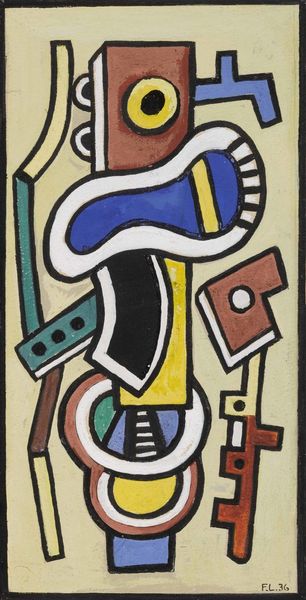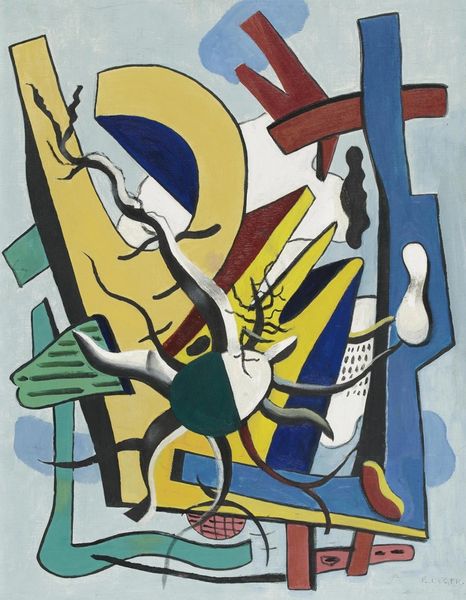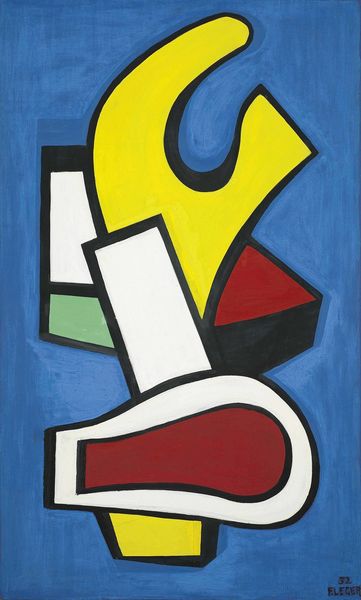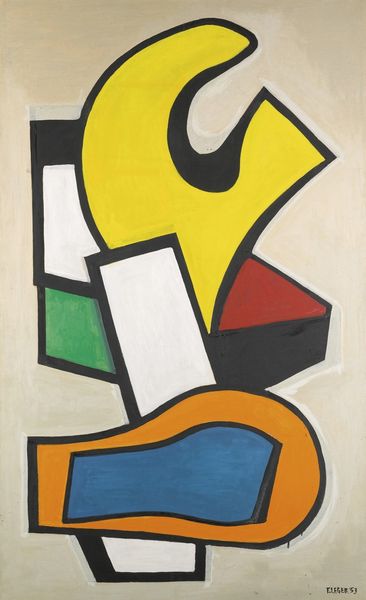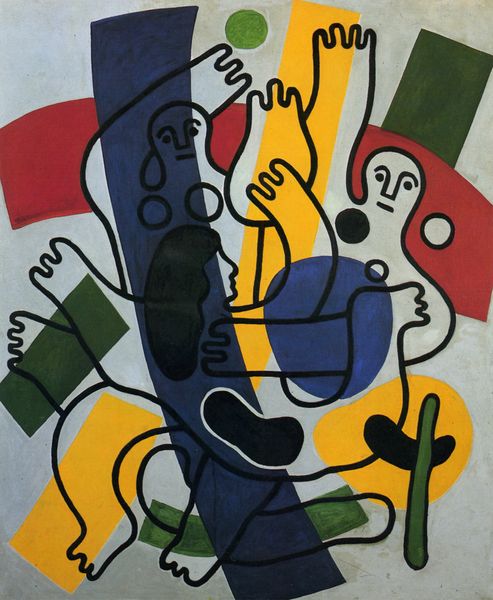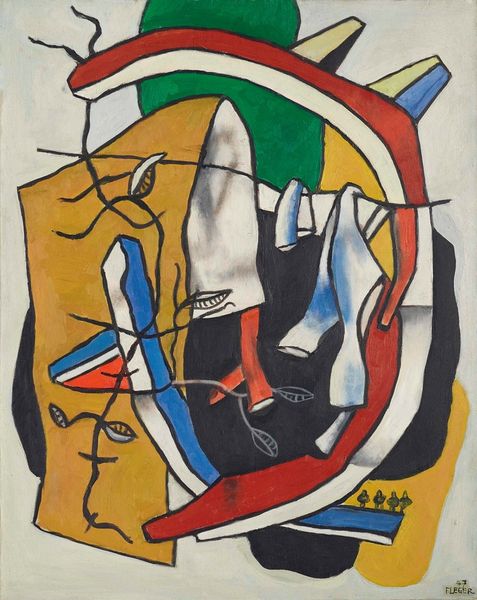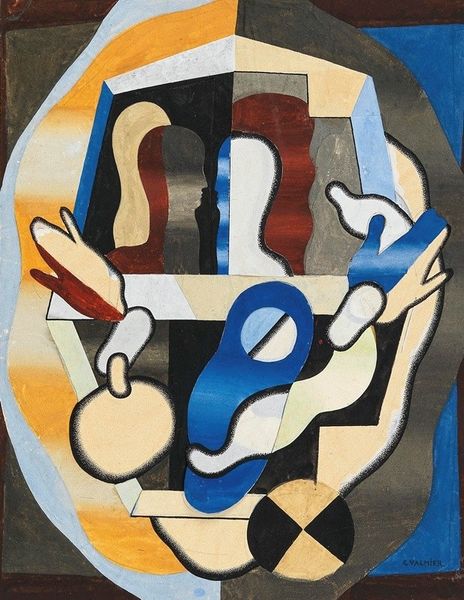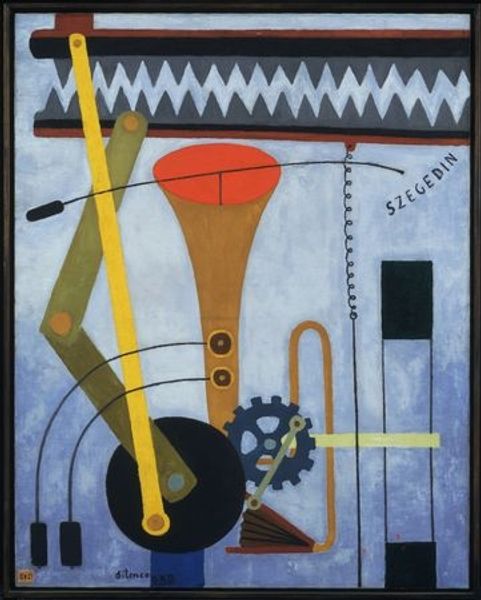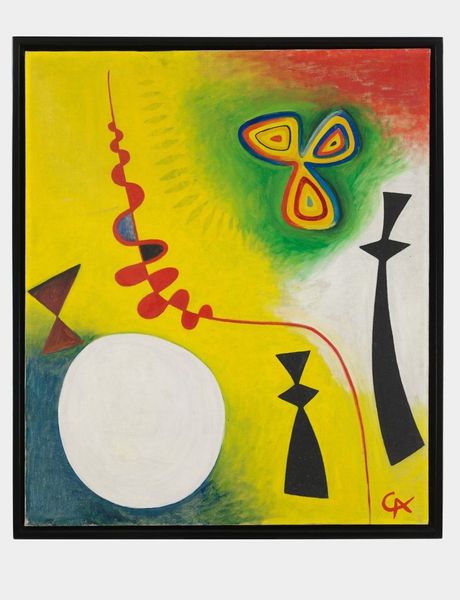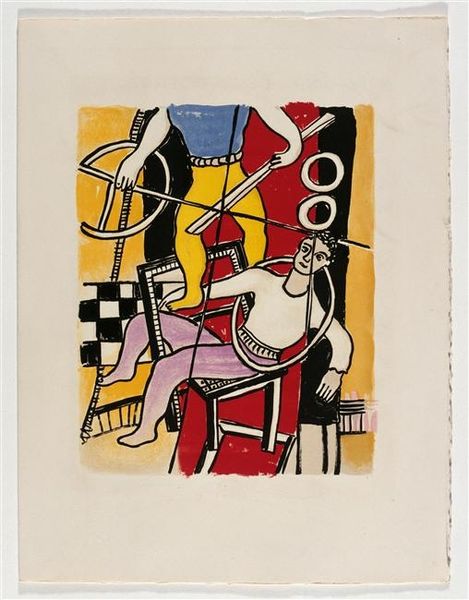
painting, acrylic-paint
#
abstract-expressionism
#
cubism
#
painting
#
caricature
#
pop art
#
acrylic-paint
#
geometric
#
abstraction
#
modernism
Dimensions: 92 x 73 cm
Copyright: Fernand Leger,Fair Use
Curator: Welcome. Today, we're looking at Fernand Léger's "Forms in Space," painted in 1950. It’s currently held at the Musée National Fernand Léger in France. Editor: My first thought? Energetic chaos. It feels like a collection of shapes playfully colliding. The bold lines and primary colors definitely grab your attention, and there's an element of lightness in spite of the density of forms. Curator: Léger, heavily influenced by Cubism and Modernism, believed in bringing art to the masses, depicting modern, industrial life. Post-World War II, he engaged with creating an optimistic, accessible aesthetic, moving away from solely representing machinery. Editor: I can see that optimism in the colour choices. However, I find myself trying to reconcile this with the rather flattened perspective and sharp delineation of shapes that contrast with softer shapes on the canvas, all held together through careful placement. Can you elaborate on the space the "forms" hold in the work? Curator: Léger was committed to visual accessibility in post-war France, aiming to resonate with ordinary citizens involved in social reconstruction. This objective can be seen in how he presents and places forms throughout the canvas. He considered cinema and architecture when developing his art and ideas about space, thus embracing how these aspects work with color and forms. Editor: It seems he wanted to dismantle traditional representation but also create a harmonious visual language. Even though it's non-representational, those color blocks create associations, a feeling that things exist independently from one another, but are joined somehow through this act of placing one next to another in what may otherwise be an unassociated way. Curator: Léger, in his post-war works, used everyday life and contemporary issues to create visual harmony within compositions, often juxtaposing contrasting elements like organic and mechanical forms, to reflect society’s diversity. The way that "Forms in Space" is composed is very characteristic of his desire to explore modern themes. Editor: Looking at it now, one might consider this artwork to have inspired mid-century textile design and the playfulness we see in some pop art to come, what do you think? Curator: Léger’s influence extends to pop art, certainly, and advertising through the emphasis on bold shapes and colors, with abstraction and geometric components. The museum itself that contains the artwork is indicative of this impact and presence in design that lingers to this day. Editor: Well, it seems like something simple is actually loaded with interesting insights, it's all about looking closely and thinking more broadly. Thanks for illuminating "Forms in Space" with such detailed clarity. Curator: A pleasure. It highlights how context enriches our understanding and reshapes perspectives.
Comments
No comments
Be the first to comment and join the conversation on the ultimate creative platform.
